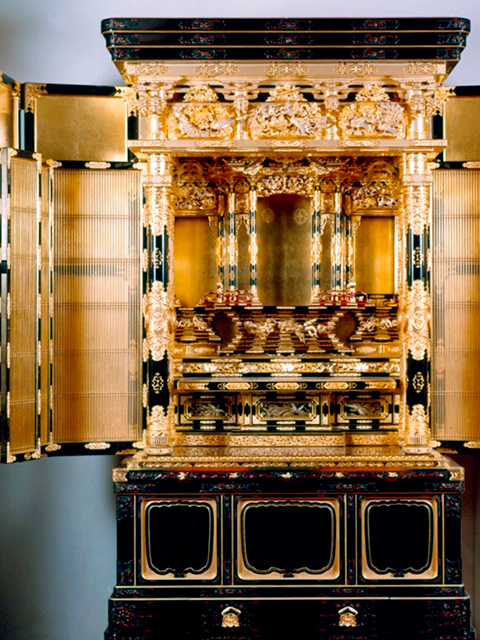NAGOYA Butsudan (Household Buddhist Altars)

The production of Nagoya household Buddhist altars dates back to at least the beginning of the Edo era, when stores specializing in these items were already in operation. These wholesalers formed a merchant guild, honed their skills and cultivated traditional methods and techniques.
At the beginning of the Meiji era, a union was formed and Nagoya household altars were shown at industrial exhibitions across the country, which led to an increase in production.
Nagoya household altars are made in a number of styles suitable for different Buddhist sects. The wide range of techniques used in the production of theses altars results in works that express a peaceful spirituality or a tranquility consistent with Zen. Functional considerations include a drawer in the base for storing candles and other prayer implements.
Feature
Nagoya household altars are made in a variety of styles suitable for different Buddhist sects, ranging from elegant Pure Land altars to more subdued Zen Buddhist pieces. Nagoya household altars are characterized by their practicality. For example, all the prayer implements can be stored inside the base of the altar.
How to make
Specialist artisans are responsible for each facet of production. These include kiji-shi, shogon-shi, chokoku-shi, naigai-kazarikanagu-shi, nushi, emaki-shi and hakuoshi-shi. The altars are assembled using mortise and tenon joints and even the smallest details are finished with a high level of skill and attention. The altars can be dismantled and the individual sections restored using a method called osoji.

